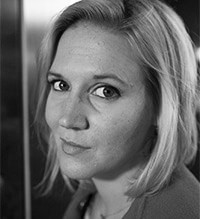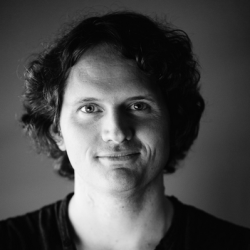
Rick Dunkerly was a free spirit. He was an idealist and an agitator. He wrote poems and letters to the editor. He rescued Collies and rooted for the underdog. He taught Bible studies at his church and dove deep into the book of Revelation. He dearly loved his four daughters.
But he was not well. At times, he struggled with alcoholism, diabetes, and depression; he struggled to maintain family relationships. He lost a decades-long career post and saw his long marriage fall apart. He worked part-time here and there, but the income wasn’t enough. He made several suicide attempts. In his final months he became homeless, living in his car and in motels or staying with friends.
While working at a call center he was robbed at gunpoint, the assailant cornering him in a men’s restroom. He was prescribed ten sessions of counseling and the event was considered to be resolved.
Two months later, on August 6, 2006, Rick drove himself to a dog park in San Dimas, California. He sat behind the wheel, pulled out a gun found in his friend’s dresser drawer, and shot himself. He was 59.
Suicide stories like Rick’s provoke complex feelings in each of us, a disquieting mix of grief and anger and helplessness. We ask ourselves what could have been done to avoid this. Lacking answers and recourse, some conclude that nothing could have changed the early ending to Rick’s life; he was one of those who needed the most help but wouldn’t take it. Erin Dunkerly (MAICS ’03) would disagree with those assumptions.
Rick was Erin’s father and her best friend. She was devoted to him, and he to her. One Christmas before he died, she sneaked into his apartment when he was gone and delivered a Christmas tree, complete with ornaments, lights, and a tin angel holding a banner that said “Peace.” He pried the halo off that angel and kept it on display all year long.
The two of them remained in close contact while Erin studied at Fuller’s Pasadena campus in the early 2000s. Erin intended to go into the field of international development after graduation—but at Fuller, as she worked first for the provost and then the Brehm Center, she began to recognize her own administrative gifts. She would often meet with her father over a meal, brainstorming about next steps in her future and smiling at his contrarian quips and political wisecracks. Yet, while the next steps in her vocational journey remained foggy, there he sat in front of her, clearly needing support himself. At times there seemed to be a reversal of roles between parent and child. Once she had to intervene by dismantling his car engine when he threatened to drive drunk from Whittier up to Pismo Beach. She lent him money when he couldn’t make ends meet.
The day her father died, before she learned what happened, Erin felt strange—almost a premonition she would later attribute to a primal and profound bond between parent and child. Having entered law school after Fuller, she was busy externing for a federal judge, and it had been about a month since she and her dad had last spoken. With her 30th birthday a week away, she thought about how she wanted to see him, maybe go to a movie together. But she decided she’d call him the following day.
Late that night, Erin’s doorbell rang. “Police!” said a voice from outside the door. The voice belonged to a woman who was in fact a death investigator from the Los Angeles Coroner’s Office. She broke the devastating news to Erin and spoke with her for about 30 minutes, tactfully asking questions to rule out the possibility of a homicide. Reflecting on the experience, Erin noted, “It’s really amazing how your brain and body work during a moment like that. The shock of it all. After the investigator explained what had happened, I asked, ‘Well, is he okay?’”
That night, Erin, still reeling from shock, had to tell the rest of her family. She phoned her mother and sister, who lived up in the Pacific Northwest, and then had a friend drive her through midnight’s blackness to both Whittier and Simi Valley where her two younger sisters lived. Later that week she bolstered her bantam frame with oversized courage and went to the coroner’s office with a friend to reclaim the possessions found on her father’s body. She went to an evidence yard in San Dimas where they had preserved his car exactly as it was found. The radio was still on; the blood remained. She and her family parsed out a suicide note that ended: “I was too tender for this world.” In reflecting on the experience, Erin writes, “My father shot himself, and the bullet hit everyone. It hit me, my sisters, my mother, our extended family, his friends, and radiated to others. It’s frightening. It’s bloody. It’s stigmatizing. It was the end of the world as I knew it.”

Why would Erin disagree, then, with the notion that suicides cannot be prevented? Because, as she got involved with suicide-prevention organizations such as All Saints Pasadena’s Gun Violence Prevention Task Force, she learned that view was simply not true. For every person who commits suicide, there are numerous others who have seriously considered but avoided taking their lives. (See below to learn more.)
Erin believes that a community in action can make the world tender enough for people like her father to go on living. They can individually and collectively give tin angels that bear peace for the mentally ill or addicted. Before her father died, this meant remaining connected to him despite his brokenness, an approach to family Erin feels was shaped by her time at Fuller, especially by voices in the School of Psychology. After his death, it has meant speaking about her own experience and advocating for gun safety to protect the vulnerable among us. “A lot of people who have loved ones with cancer participate in walks and fundraisers that will help find a miracle cure,” she says. “But those left behind after a suicide—we have already lost our loved ones, and we are just trying to prevent others from sharing in that same pain.”
It was loving community that made it possible for Erin to bear the grief of her father’s death. The Lutheran church where she grew up held a memorial service for the family. “When you’re in mourning, it’s lovely to have that parade of people come and gather and remember and do the potluck lunch. People who know the importance of attending funerals. You remember them forever,” she says. Likewise, Erin drew strength from the Fuller community. “The President’s Cabinet sent me a card. Russ Spittler and Rich Mouw continued to check in with me,” she says of the former provost and president, her voice breaking. “I was more to them than just someone who worked there.”
After graduating from Loyola Law School, Erin became a defense-side civil litigator for a firm in South Pasadena. As she represents public entities, her work has taken her back to the same building where she retrieved her father’s possessions after his suicide—and painful memories return. She knows that the grief will remain, surging and subsiding, for the rest of her life. When asked to reflect on her father’s death in light of her faith, she explains, “You know, this story is not a clean narrative. I identify with the theologian Frederick Buechner, whose own father killed himself when Buechner was just a boy. In one of his books he says, ‘Adolf Hitler dies a suicide in his bunker with the Third Reich going up in flames all around him, and what God is saying about the wages of sin seems clear enough. . . . But what is God saying through a good man’s suicide?’ I don’t really know what God is saying, but I know he’s working through it. Even in the midst of the worst crisis, if I listen, I hear, ‘Lo, I am with you always, even unto the end of the world.”




